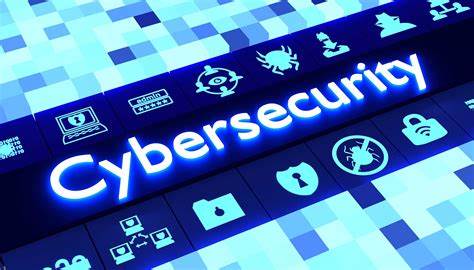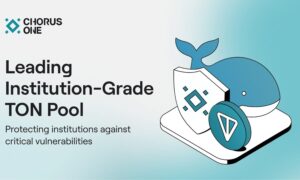Rapid digital transformation also results in companies witnessing varied and alarming cyber security challenges, compromising data, breaches, financial damage, reputation loss, and supply chain disruption, among other issues. Further, with the onslaught of the pandemic and increased remote working, cybercriminals are finding newer avenues to target companies for their benefit. Cybercrime is predicted to cost companies globally around USD 10.5 trillion annually by 2025, as per Cybercrime Magazine.
Advancement of technology also leads to cyber criminals using sophisticated means to hack into vulnerable enterprise systems and gain access to crucial user data, holding companies ransom or infecting them with malware. Thus, the need to protect from cyber threats has also been gaining prominence recently.
While cyber security issues are plaguing almost all industries, some sectors are more prone to frequent cyberattacks than others. These domains are rich with user data valuable to cyber criminals for selling them on the dark web. Sectors such as financial services, healthcare, retail, supply chain or even small businesses are often on the target list of hackers; this article mainly focuses on the top two domains that are increasingly on the radar of cybercriminals.
Financial services
The financial services sector has always been vulnerable to cyber threats, owing to the vast personal user data being stored in their systems. However, the industry witnessed an almost 238 percent jump in cyberattacks during the pandemic, as per the latest cyber security statistics. With a lean staff, security professionals working remotely and a need to rapidly undertake digital change, it became a struggle for most financial institutes to respond quickly to any attack and safeguard their user’s data and information. Thus, it is pertinent for financial services organizations to create efficient cybersecurity strategies and implementation plans for identifying and proactively mitigating risks. Some of the risk vectors that are threatening this sector are discussed below:
- Malware: Trending malware technology is being easily assessed by malicious cyber criminals in the current set-up with the popularity of the malware-as-a-service model. Around 75 percent of the data breaches in the financial services sector are attributed to malware. Newer means, such as file-less malware attacks, are making the sector more vulnerable to such risks, pushing for the need to have a robust cyber security program.
- Social engineering: Unlike other attacks that exploit system vulnerabilities, social engineering exploits human weaknesses. The hackers try to gain access to the system through phishing scams, tricking privileged users into sharing information that will provide the cybercriminals access to their login details. Once the access is granted, the hackers steal crucial data and often encrypt it to lock users from their systems, demanding ransoms.
- Data manipulation: Cybercriminals, especially an insider with malicious intent, may focus on manipulating data by changing the information stored in the system. While these changes may look legitimate, they may not be easy to identify. Such changes, if undetected, may result in massive data issues, non-compliant data standards and even regulatory fines.
- Third-party services: Most financial services companies employ third-party service providers for many of their digital requirements. Even if the company’s security system is robust, any vulnerability in cyber security protocol in the third-party system may result in data breaches at the institution’s end. Thus, the onus is on the financial services companies to ensure that all third-party providers use compliant solutions per the latest industry standards.
- Spoofing: One of the leading issues for any financial institution, cybercriminals develop fake websites similar to a bank or financial institution’s original site through spoofing. They redirect vulnerable users to these fake sites and prompt them to enter their login details. Once they capture and steal the users’ login credentials, the hackers cause substantial financial and reputational damage for the companies.
With cyberattacks gaining prominence recently, regulators have also started implementing stringent cyber security laws and guidelines for the financial institution sector. Further, with cybercriminals undertaking the latest technical routes to attack the systems, it has become critical for financial services institutions to safeguard their users and information.
One of the most important strategies to find out about any underlying vulnerability in an institution’s security infrastructure and compliance protocol is to understand and find out about the exact vulnerabilities within the system through regular penetration testing and vulnerability scans. This could be undertaken by any leading cyber security company in USA. Further, proactive measures such as training the internal team and providing important awareness messages to the users will also help safeguard the system. Financial institutes may also focus on employing managed security service providers or any top cyber security companies in USA, to help them identify and mitigate risks on a real-time basis while providing them with audits for compliance to meet regulatory expectations.
Healthcare
Cyber security has become a growing concern for the healthcare industry in the recent past, with an increase in hacking incidents on healthcare institutions gaining prominence. With the growth in technology and IoT devices, healthcare providers need to secure more connected medical devices and endpoints and implement a comprehensive healthcare identity management system. While most healthcare organizations have been seen to strive to keep their systems safe, cybercriminals are using more sophisticated means to hack their systems for valuable patient data.
As per cyber security experts, the sensitive electronic protected health information or ePHI is at the highest risk of breach, as it is being used by almost every other hospital and clinic through a varied digital medium. Further electronic health records or EHRs and other forms of medical data are being used by physicians and pharmacists through different endpoints. Such data is valuable for cybercriminals and can potentially hold any healthcare institute for ransom.
The healthcare sector’s issue is that it deals with various complex digital networks in different hospitals and clinics, including systems such as e-prescribing, medical internet of things, decision support systems or HVAC – intelligent heating, ventilation, and air conditioning. Any vulnerability in these systems will result in cybercriminals accessing crucial patient data. Further, healthcare providers also need to focus on protecting their patient privacy, complying with stringent regulations such as HIPAA and GDPR. This increases the difficulty level for healthcare organizations to implement robust security measures to keep cybercriminals at bay. Employing a cyber-security services company may help in resolving such issues.
In the recent past, the pandemic contributed to the up-scaling of the sector, pushing healthcare institutes into telemedicine. This has resulted in creating more vulnerable endpoints for cyber-attacks as well. Further, healthcare institutes are often found to be using outdated software, becoming an easy target to exploit the system and install malware. Such gaps in the security posture have threatened the security of sensitive patient data. Some of the common vectors are that are posing cyber security threats to the healthcare sector are as follows:
- Phishing: These are emails or attachments, text messages or social media messages sent to healthcare professionals to infect their systems and endpoints with malware and gain access to their enterprise network.
- Man-in-the-middle or MITM attacks: A more sophisticated form of attack, herein, the cybercriminal intercepts an existing data transfer or conversation between two parties by pretending to be a legit participant. While the victim witnesses the exchange of data as standard, the attacker hacks the confidential data easily. This may cause substantial financial losses and penalties to the healthcare institute for confidentiality breaches.
- Network vulnerabilities: Healthcare institutes have a complex set of network and access points, such as wired and wireless networks, which, if found vulnerable, could be a breeding ground for cybercriminals. Through methods such as HTTPS spoofing, ARP and other targeted means, cybercriminals can access the data easily.
- Ransomware: One of the most potentially dangerous forms of cybercrime, ransomware may cause more than financial and reputation loss to a healthcare institute. Cybercriminals often encrypt patient data and extort money from organizations for decryption. They may also block the clinical system, which could result in equipment used for life support or surgery not working properly, thus, endangering the lives of patients.
Thus, a proactive approach to privacy and data protection should be undertaken to ensure that such cyber threats and incidents are identified and mitigated immediately. Further, earmarking clear roles and responsibilities, undertaking risk assessments at regular intervals and implementing a robust cyber security framework to protect the systems and networks proactively will help safeguard the IT ecosystem seamlessly, especially for sensitive sectors such as financial services and healthcare.

































